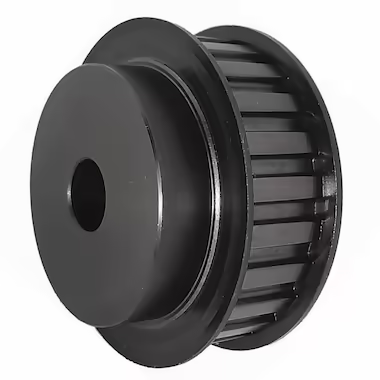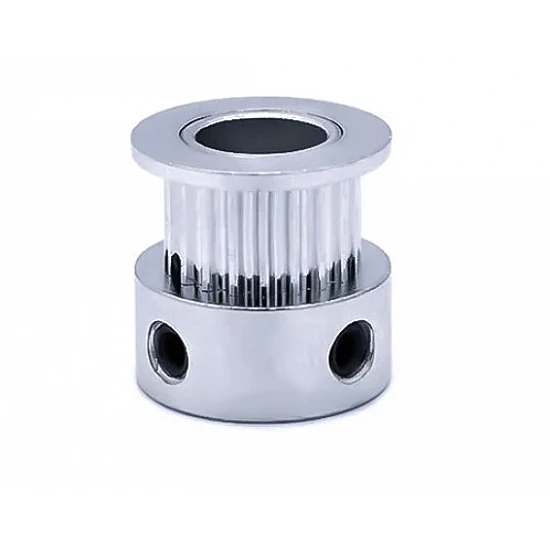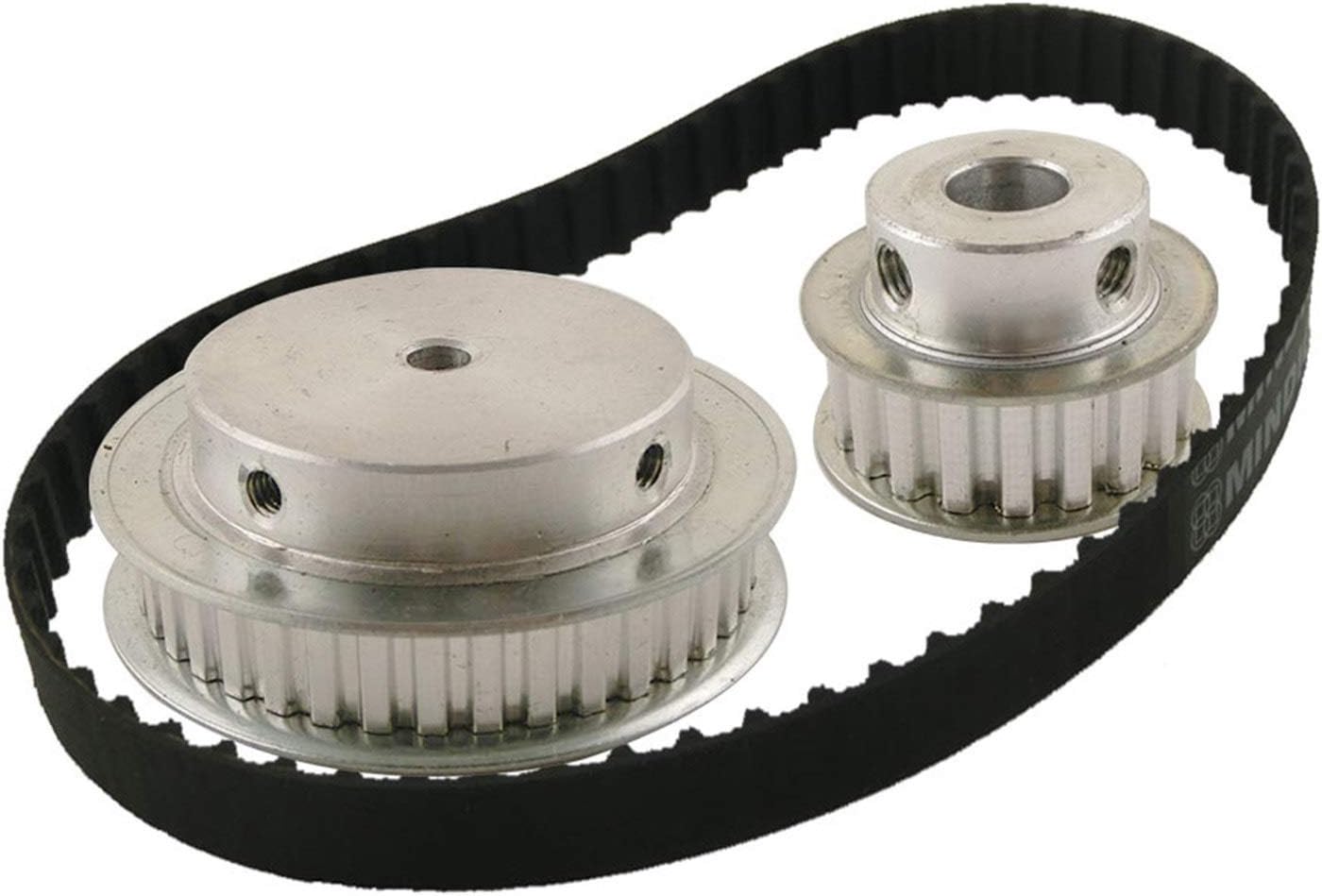Product Description
SL9 SL XL L Aluminium Timing Pulley
1. Teeth Type: T2.5,T5,T10,T20,MXL,XL,L,H,XH,XXH,XXL,SL9,SL12,SL,HTD:3M,5M,8M,14M,20M, STPD/STS type(S2M,S3M,S4.5M,S5M,S8M,S14M) GT2 AND SO ON
2. Material: aluminum, carbon steel, brass and nylon available.
3. Surface treatment: blacken, anodize, zinc-plating and so on
4. Tolerance: conform to customers requirement
5. OEM/ODM service offered
Main Products
Company Information
HangZhou CHINAMFG Industry Co., Ltd. is a specialized supplier of a full range of chains, sprockets, gears, gear racks, v belt pulley, timing pulley, V-belts, couplings, machined parts and so on.
Due to our CHINAMFG in offering best service to our clients, understanding of your needs and overriding sense of responsibility toward filling ordering requirements, we have obtained the trust of buyers worldwide. Having accumulated precious experience in cooperating with foreign customers, our products are selling well in the American, European, South American and Asian markets.Our products are manufactured by modern computerized machinery and equipment. Meanwhile, our products are manufactured according to high quality standards, and complying with the international advanced standard criteria.
With many years’ experience in this line, we will be trusted by our advantages in competitive price, one-time delivery, prompt response, on-hand engineering support and good after-sales services.
Additionally, all our production procedures are in compliance with ISO9001 standards. We also can design and make non-standard products to meet customers’ special requirements. Quality and credit are the bases that make a corporation alive. We will provide best services and high quality products with all sincerity. If you need any information or samples, please contact us and you will have our soon reply.
Packaging & Shipping
Exhibition
contact us
/* January 22, 2571 19:08:37 */!function(){function s(e,r){var a,o={};try{e&&e.split(“,”).forEach(function(e,t){e&&(a=e.match(/(.*?):(.*)$/))&&1
| Material: | Aluminium |
|---|---|
| Teeth Type: | SL9 SL XL L Aluminium Timing Pulley |
| Transport Package: | Standard Sea Worthy Package |
| Specification: | ISO |
| Trademark: | MW |
| Origin: | China |
| Customization: |
Available
| Customized Request |
|---|

How do XL pulleys compare to other pulley types, such as HTD or V-belt pulleys?
XL pulleys, HTD pulleys, and V-belt pulleys are all popular types of pulleys used in mechanical systems. Here is a detailed comparison of XL pulleys with HTD and V-belt pulleys:
1. Tooth Profile:
XL pulleys and HTD (High Torque Drive) pulleys both utilize toothed belts for power transmission. The main difference lies in their tooth profiles. XL pulleys have trapezoidal teeth, while HTD pulleys have a curvilinear tooth profile. V-belt pulleys, on the other hand, are designed for V-belts, which have a wider, wedge-shaped cross-section.
2. Power Transmission Capacity:
XL pulleys and HTD pulleys offer higher power transmission capacities compared to V-belt pulleys. The toothed belt designs of XL and HTD pulleys provide a positive engagement, preventing slippage under higher loads or torque. V-belt pulleys rely on friction between the belt and pulley, limiting their power transmission capacity.
3. Speed Capability:
XL pulleys and HTD pulleys are both suitable for higher speed applications compared to V-belt pulleys. The toothed belt designs allow for better grip and reduced belt slippage, enabling XL and HTD pulleys to operate at higher rotational speeds without compromising performance. V-belt pulleys are generally suitable for lower speed applications.
4. Efficiency:
XL pulleys and HTD pulleys offer higher efficiency compared to V-belt pulleys. The positive engagement between the toothed belts and pulleys in XL and HTD systems minimizes slippage and associated energy losses. V-belt pulleys, relying on friction, may experience higher energy losses due to belt slip.
5. Precision and Positioning:
XL pulleys and HTD pulleys provide better positional accuracy and reduced backlash compared to V-belt pulleys. The toothed belt systems offer improved control and synchronization, making them suitable for applications that require precise positioning or timing, such as robotics or CNC machines.
6. Noise and Vibration:
XL pulleys and HTD pulleys generally produce less noise and vibration compared to V-belt pulleys. The toothed belt systems exhibit smoother operation due to their positive engagement, reducing noise and vibration levels. V-belt pulleys may generate more noise and vibration due to potential slippage and belt oscillation.
7. Installation and Maintenance:
XL pulleys, HTD pulleys, and V-belt pulleys are all relatively easy to install and maintain. However, V-belt pulleys may require more frequent tension adjustments and periodic belt replacements due to belt wear and stretch. Toothed belt systems, including XL and HTD pulleys, often require less maintenance and offer longer belt life.
8. Application Suitability:
The choice between XL pulleys, HTD pulleys, and V-belt pulleys depends on the specific application requirements. XL and HTD pulleys are commonly used in industrial automation, power transmission, and precision machinery applications that demand higher torque, speed, and accuracy. V-belt pulleys are often employed in applications such as HVAC systems, automotive engines, and smaller machinery.
In summary, XL pulleys, HTD pulleys, and V-belt pulleys have differences in tooth profile, power transmission capacity, speed capability, efficiency, precision, noise/vibration levels, installation/maintenance, and application suitability. Understanding these differences is crucial in selecting the most appropriate pulley type for a given mechanical system and its specific requirements.

How does the tooth profile of XL pulleys contribute to their performance?
The tooth profile of XL pulleys plays a crucial role in determining their performance in power transmission systems. Here’s a detailed explanation of how the tooth profile contributes to their performance:
1. Efficient Power Transmission:
The tooth profile of XL pulleys is designed to engage with the corresponding teeth on the timing belt. This positive engagement ensures efficient power transmission by minimizing slippage and maximizing the transfer of rotational motion. The tooth profile allows for a large contact area between the pulley and the belt, enabling effective torque transfer and minimizing energy losses.
2. Accurate and Repeatable Positioning:
The tooth profile of XL pulleys enables accurate and repeatable positioning in motion control systems. The teeth on the pulley mesh precisely with the teeth on the timing belt, providing precise angular displacement and positioning control. This tooth engagement allows for reliable and consistent positioning, making XL pulleys suitable for applications that require high positional accuracy, such as robotics and CNC machines.
3. Reduced Backlash:
The tooth profile of XL pulleys helps reduce backlash, which is the play or clearance between the teeth of the pulley and the belt. Backlash can introduce inaccuracies and vibrations in the power transmission system. The tooth profile of XL pulleys minimizes backlash by ensuring a close fit with the timing belt teeth, resulting in smoother operation, improved precision, and reduced mechanical vibrations.
4. Load Distribution:
The tooth profile of XL pulleys allows for effective load distribution along the width of the belt. As torque is transmitted from the pulley to the belt, the tooth profile ensures that the load is evenly distributed across the belt’s width. This load distribution helps prevent concentrated stress points and excessive wear on specific areas, leading to improved durability and longevity of the pulley and belt.
5. Noise Reduction:
XL pulleys with well-designed tooth profiles contribute to reduced noise levels during operation. The tooth engagement and smooth meshing between the pulley and the timing belt minimize vibration and noise generation. This advantage is particularly important in applications that require low noise levels, such as medical equipment, office machinery, and audiovisual systems.
Overall, the tooth profile of XL pulleys significantly impacts their performance by enabling efficient power transmission, precise positioning, reduced backlash, even load distribution, and noise reduction. Manufacturers carefully design the tooth profiles of XL pulleys to optimize these performance characteristics for various applications and operating conditions.

Can you explain the key characteristics and specifications of XL pulleys?
XL pulleys have specific characteristics and specifications that are important to understand for their proper selection and use. Here are the key details:
1. Tooth Profile:
XL pulleys have a tooth profile designed to work with XL timing belts. The tooth profile is trapezoidal in shape, with specific dimensions and angles to ensure precise engagement with the corresponding teeth on the timing belt.
2. Pitch Size:
The pitch size of an XL pulley refers to the distance between adjacent tooth centers. XL pulleys have a standardized pitch size of 0.200 inches (5.08 mm). This pitch size ensures compatibility with XL timing belts of the same pitch, allowing for easy interchangeability.
3. Belt Width Compatibility:
XL pulleys are designed to accommodate XL timing belts of specific widths. The belt width is determined by the application requirements and load considerations. XL pulleys are available in various groove widths to match the corresponding XL timing belt width, ensuring proper belt engagement and power transmission.
4. Material and Construction:
XL pulleys are commonly made from materials such as aluminum, steel, or plastic. The choice of material depends on factors like the application requirements, load capacity, and cost considerations. The pulleys are precision-machined to ensure accurate tooth profiles, smooth operation, and reliable performance.
5. Number of Teeth:
The number of teeth on an XL pulley determines the speed ratio and the positioning accuracy of the motion control system. The number of teeth can vary depending on the specific application requirements and the desired speed and torque ratios.
6. Flange Options:
XL pulleys may come with flanges on one or both sides. Flanges provide additional support to the timing belt, preventing it from slipping off the pulley during operation. The presence and configuration of flanges depend on the specific application needs and the desired level of belt stability.
7. Application Range:
XL pulleys are suitable for applications that require precise motion control, such as robotics, CNC machines, 3D printers, and other automated systems. They can handle moderate to high torque requirements and operate at various speeds, depending on the specific pulley size, material, and construction.
8. Interchangeability:
Due to standardized pitch sizes and tooth profiles, XL pulleys from different manufacturers are interchangeable with XL timing belts of the same specifications. This interchangeability simplifies replacement, maintenance, and system upgrades.
Understanding these key characteristics and specifications of XL pulleys is essential for selecting the right pulley for a given application, ensuring proper power transmission, and achieving accurate motion control.


editor by CX
2024-04-12
